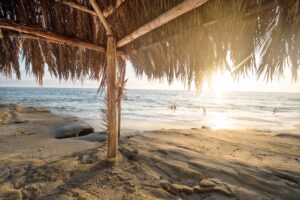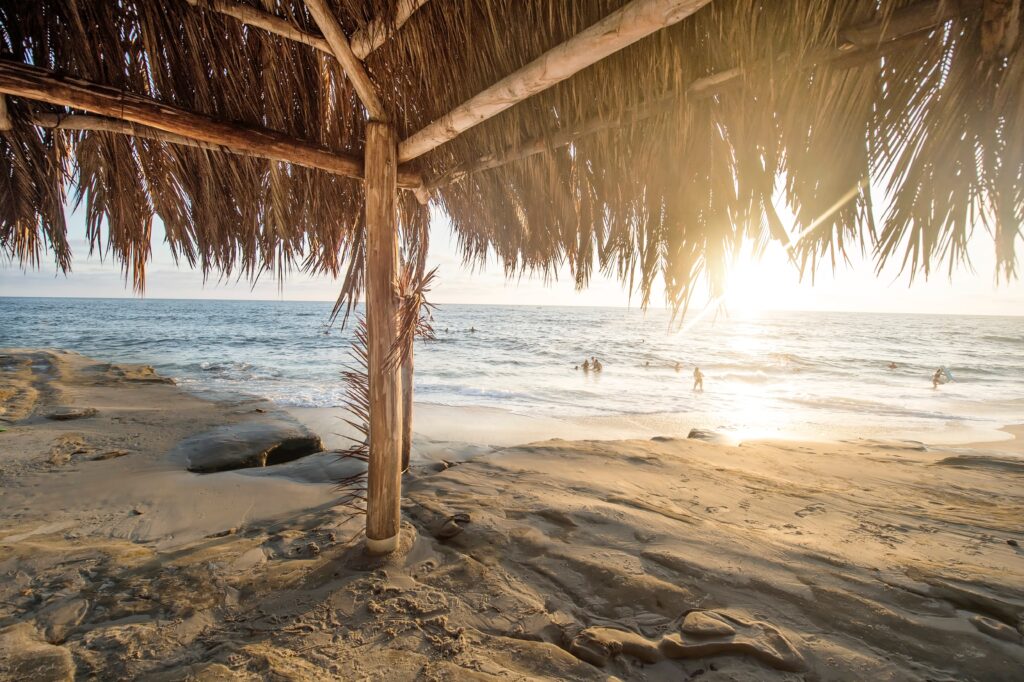San Diego’s Hidden Gems: Our Top Picks
As seasoned travelers and proud San Diegans, we’ve discovered some of the most amazing yet lesser-known spots in our city. If you’re looking for a unique and unforgettable experience, you’ve come to the right place. In this article, we’re going to reveal some of San Diego’s hidden gems that you won’t find in most tourist guides. Whether you’re a history buff, a foodie, a nature lover, or just an adventurer, there’s something here for you.
Exploring the Off-Beaten Paths: Our Insider Tips
San Diego is much more than just beaches and theme parks. If you’re willing to venture out a bit, you’ll find some hidden treasures that will surprise and delight you. Here are some of our favorite hidden gems that you can visit right now:
La Jolla Secret Swings
La Jolla is one of San Diego’s most beautiful and sought-after neighborhoods. Its beaches, restaurants, and attractions draw visitors from all over the world. But if you’re looking for a unique and unforgettable experience, you need to visit the La Jolla Secret Swings. These hidden swings are a local favorite, and they offer a unique way to enjoy the breathtaking views of the Pacific Ocean. In this article, we’ll take a closer look at these secret swings, their history, and how you can find them.
The History of the La Jolla Secret Swings
The La Jolla Secret Swings first appeared on social media in 2018. The swings were created by a group of local residents who wanted to add some joy and magic to their community. The swings were originally made from old surfboards and hung from trees overlooking the ocean. They quickly became a hit on social media, and people from all over San Diego started to visit La Jolla to find them.
Since then, the swings have become a local legend. They have been featured in national and international media, and they are now one of San Diego’s most popular attractions. The swings have also inspired other hidden swing installations in San Diego and beyond.
Finding the La Jolla Secret Swings
Finding the La Jolla Secret Swings can be a challenge, but that’s part of the fun. The swings are located in a hidden spot, and they are not marked on any map. However, there are a few ways to find them.
The easiest way to find the swings is to use Google Maps. If you search for “La Jolla Secret Swings,” you’ll find several pins on the map. However, not all of these pins are accurate, and some may lead you to dead ends. To increase your chances of finding the swings, look for recent reviews and photos of the swings on social media. These can give you a better idea of where to start your search.
Once you arrive in the general area, keep an eye out for other visitors. The swings are usually busy, especially on weekends and holidays. If you see a group of people taking photos near a trailhead, that’s a good sign that you’re on the right track. However, be respectful of the locals and other visitors. The swings are located in a residential area, and visitors are asked to keep noise levels down and not to park in front of private driveways.
Harper’s Topiary Garden
San Diego is a city filled with hidden gems, and Harper’s Topiary Garden is one of them. This beautiful garden is located in the suburban community of Mission Hills, and it’s a must-visit destination for anyone who loves nature, art, and whimsy. In this article, we’ll take a closer look at Harper’s Topiary Garden, its history, and what you can expect to see when you visit.
The History of Harper’s Topiary Garden
Harper’s Topiary Garden was created by Edward Harper, a retired landscape architect, and his wife, Betty Harper. The garden began as a simple hobby in the 1980s, but it quickly grew into a passion project that would consume the couple’s time and energy for the next few decades.
The garden features over 50 topiaries, each one sculpted from a variety of plants, including ficus, myrtle, and rosemary. The topiaries range in size from small animals and birds to larger-than-life elephants and giraffes. The garden also features a pond, a waterfall, and a variety of other plants and flowers.
What to Expect When You Visit Harper’s Topiary Garden
When you visit Harper’s Topiary Garden, you’ll be greeted by a whimsical and magical landscape. The garden is open to the public, and visitors are encouraged to take their time and explore at their own pace.
As you walk through the garden, you’ll see a variety of topiaries, each one more impressive than the last. The attention to detail is incredible, and you’ll find yourself admiring the intricate shapes and textures of each plant.
One of the highlights of the garden is the elephant topiary, which stands over 10 feet tall and weighs over 10,000 pounds. The elephant is the largest topiary in the garden and is a true masterpiece of topiary art.
The garden also features a variety of other sculptures and art installations, including a life-size chess set and a dragon made out of recycled materials.
In addition to the topiaries and sculptures, the garden is also home to a variety of birds and other wildlife. You’ll see ducks and geese swimming in the pond, hummingbirds flitting around the flowers, and even the occasional hawk soaring overhead.
Sunny Jim Sea Cave
La Jolla, California is known for its picturesque beaches and coves, but few places are as unique and captivating as Sunny Jim Sea Cave. This sea cave is tucked away beneath a storefront in La Jolla Cove, and it’s a must-see attraction for anyone visiting the area.
Located in La Jolla Cove, Sunny Jim Sea Cave is a stunning natural wonder that attracts visitors from all over the world. The cave is named after Frank Baum, the author of The Wizard of Oz, who visited the cave in the early 1900s and was reminded of a character from his book.
What makes Sunny Jim Sea Cave so unique is the fact that it’s only accessible by climbing down a narrow staircase that leads directly into the cave. Once inside, visitors are treated to a breathtaking view of the ocean and the cave’s natural rock formations.
The History of Sunny Jim Sea Cave
Sunny Jim Sea Cave has a rich history that dates back to the early 1900s. The cave was originally discovered by Gustav Schultz, a German artist who settled in La Jolla in the late 1800s. Schultz was drawn to the area’s natural beauty and spent much of his time exploring the coastline.
In 1902, Schultz discovered a small opening in the cliffs near La Jolla Cove. He decided to explore the opening and discovered a hidden sea cave that was unlike anything he had ever seen before. Schultz was so captivated by the cave that he decided to turn it into a tourist attraction.
He built a wooden staircase that led down to the cave and charged visitors a small fee to explore the cave. The cave became so popular that he decided to build a small store on top of the cave where visitors could buy souvenirs. The store, which is still standing today, was named after a cartoon character from the San Francisco Examiner, “Sunny Jim.”
Tips for Visiting Sunny Jim Sea Cave
If you’re planning on visiting Sunny Jim Sea Cave, there are a few tips to keep in mind to ensure a safe and enjoyable experience.
First, wear comfortable shoes with good traction. The staircase leading down to the cave can be slippery, so it’s important to wear shoes that can grip the stairs.
Second, bring a camera. The cave’s natural beauty is truly stunning, and you’ll want to capture the moment for posterity.
Finally, be aware that the cave can get crowded, especially during peak tourist season. It’s best to visit the cave during off-peak hours to avoid large crowds.
Spruce Street Suspension Bridge
The Spruce Street Suspension Bridge is a pedestrian-only bridge that spans 375 feet over a deep canyon in the Bankers Hill neighborhood of San Diego. The bridge was originally built in 1912 to connect the newly developed residential neighborhoods on both sides of the canyon. It has since become a popular destination for tourists and locals looking for a unique outdoor adventure.
History of the Spruce Street Suspension Bridge
The Spruce Street Suspension Bridge has a rich history that dates back over 100 years. The bridge was designed by Edwin Capps, a prominent San Diego architect who was responsible for many of the city’s iconic buildings. The construction of the bridge was completed in 1912, and it was immediately popular among residents of the Bankers Hill neighborhood.
Over the years, the bridge has undergone several renovations to ensure its safety and longevity. In 1952, the bridge’s original wooden deck was replaced with a steel deck. In the 1970s, the bridge was renovated again to replace its original steel cables with modern steel cables.
For adventure-seekers, the Spruce Street Suspension Bridge offers an unforgettable experience. Walking across the bridge is not for the faint of heart, as the bridge’s swaying motion and height can be intimidating. However, for those who are up for the challenge, the experience is well worth it.
Visitors can feel the thrill of walking across the bridge while taking in the stunning views of the canyon below. The bridge is also a popular spot for photography, as it offers a unique perspective of San Diego’s skyline.
SS Monte Carlo Shipwreck
The SS Monte Carlo was a steamship that was built in 1921 and was originally used for passenger transport. However, during the Prohibition era in the 1920s and 1930s, the ship was used to smuggle illegal liquor into the United States from Mexico. The ship would dock off the coast of San Diego and transfer the illegal alcohol to smaller boats that would take it ashore. The SS Monte Carlo was one of many ships that were used for smuggling during this time, but it was one of the most successful.
The Shipwreck
On December 31, 1936, the SS Monte Carlo was anchored off the coast of Coronado Beach, waiting to transfer its cargo of illegal liquor. However, a severe storm hit the area, and the ship was torn from its anchor and washed ashore. The crew abandoned the ship, and it was left stranded on the beach. The authorities later discovered the illegal cargo, but the ship remained on the beach for many years.
In 1941, the United States entered World War II, and the military took control of the beach where the SS Monte Carlo was stranded. The military used the ship for target practice, firing at it with machine guns and cannons. The ship was heavily damaged, and parts of it were blown apart. However, the ship remained on the beach, and people continued to visit it.
In the 1950s, the ship was declared a hazard, and it was partially buried in the sand. It remained in this state until the 1980s when it was uncovered by a severe storm. Since then, the ship has become a popular tourist attraction, and many people visit it each year.
Coronado Sand Dunes
At first glance, Coronado Island may not seem like an obvious addition to this list. This bustling island is home to some of San Diego’s most famous beaches and iconic landmarks, such as the Hotel del Coronado, which has attracted movie stars and politicians alike. However, despite its popularity, Coronado holds many secrets that are often overlooked.
One such hidden gem can be found near Coronado Main Beach. If you’re not aware of what to look for, it’s easy to miss the message that Navy jets regularly spot spelled out on plant-covered dunes: the words “Coronado” and “Beach.” These dunes are located just north of The Del, and whether you’re looking for a challenging workout or a relaxing picnic spot, take some time away from your usual Coronado itinerary to see if you can spot the message from your vantage point on the beach.
Ho Chi Minh Trail in La Jolla
If you’re looking for a unique and challenging hiking experience, look no further than the Ho Chi Minh Trail in La Jolla, California. This trail offers breathtaking views of the Pacific Ocean, rugged cliffs, and secluded beaches, all while providing a glimpse into the area’s rich military history.
History of the Ho Chi Minh Trail in La Jolla
The Ho Chi Minh Trail in La Jolla was created in the 1960s by surfers and local residents who were seeking a shortcut to the secluded Blacks Beach. At the time, the beach was only accessible by a steep and treacherous path, but the trailblazers discovered an easier and more direct route that followed the contours of the cliff.
During the Vietnam War, the North Vietnamese used a complex network of trails and supply routes to transport troops and supplies from North Vietnam to South Vietnam. One of these routes was named the Ho Chi Minh Trail, after the communist leader who helped to establish it. While the La Jolla trail has no direct connection to the Vietnam War, it was named in tribute to the ingenuity and resourcefulness of the North Vietnamese soldiers who used the original trail.
Hiking the Ho Chi Minh Trail in La Jolla
The Ho Chi Minh Trail in La Jolla is a challenging hike that requires a moderate level of physical fitness and agility. The trailhead is located at the intersection of La Jolla Farms Road and Blackgold Road, and there is limited street parking available nearby. The trail itself is unmarked and can be difficult to follow at times, so hikers should exercise caution and pay close attention to their surroundings.
The trail begins with a steep descent down a rocky slope, and hikers will need to navigate over rocks and boulders as they make their way towards the beach. Along the way, hikers will be treated to breathtaking views of the Pacific Ocean and the rugged cliffs that line the coast.
Once hikers reach the bottom of the trail, they will be rewarded with access to the secluded Blacks Beach. This clothing-optional beach is a popular destination for surfers and sunbathers, and its remote location makes it a peaceful and quiet spot for relaxation and contemplation.
Related Posts

San Diego’s Hidden Gems: Our Top Picks
San Diego’s Hidden Gems: Our Top Picks As seasoned travelers and proud San Diegans, we’ve discovered some of the most amazing yet lesser-known spots in our city. If you’re looking for a unique and unforgettable experience, you’ve come to the

Culinary and Beer Icons Born in San Diego: Exploring the City’s Unique Features
Culinary and Beer Icons Born in San Diego: Exploring the City’s Unique Features San Diego’s advantageous position not only provides almost 300 days of sunny weather and opportunities for winter beach activities, but also fosters culinary creativity through its diverse

Experience Fun and Comfort in the 5 Stunning Bedrooms of the Murray House
Experience Fun and Comfort in the 5 Stunning Bedrooms of the Murray House The Murray House boasts five beautifully designed and expertly furnished bedrooms that are sure to provide a comfortable stay for families and guests. The primary bedroom is

